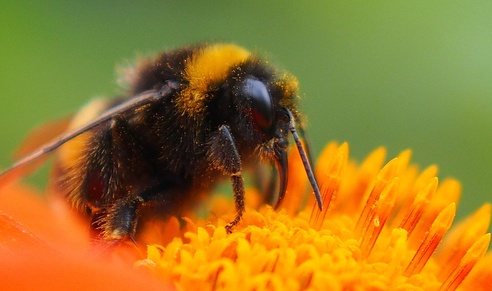WASHINGTON— The Environmental Protection Agency released a final biological evaluation today showing that a single chemical, the bee-killing insecticide sulfoxaflor, is likely putting 4% of all endangered plants and animals in jeopardy of extinction.
In addition to the extinction risk it poses to 63 species, the EPA found that sulfoxaflor is likely to harm another 462 endangered species, including 314 plants. Sulfoxaflor has previously drawn controversy because of its significant harms to bees. Today's findings also show the significant harms it causes to plant species that require pollination.
"In spite of efforts to lessen the harm it causes, this one insecticide is likely to drive the Miami tiger beetle, Dakota skipper, rusty-patched bumblebee and 60 other endangered species to extinction," said Lori Ann Burd, environmental health director at the Center for Biological Diversity. "The EPA needs to prohibit sulfoxaflor's use immediately in the places where these endangered species live. Anything less is a violation of the Endangered Species Act and a gross betrayal of our vulnerable wild animals, plants and the people who love them."
The EPA and pesticide registrant worked together to create changes to the pesticide labels to reduce the pesticide's harms to endangered plants and animals following the July 2022 release of the draft biological evaluation for sulfoxaflor. These changes resulted in a small reduction in impacts to endangered species. For example, the EPA had previously found that sulfoxaflor would jeopardize the continued existence of 7% of all endangered plants and animals.
"Today EPA finally admitted to what the agency has known for more than a decade: Sulfoxaflor kills bees, pollinators and our nation's most imperiled species," said Sylvia Wu, senior attorney at the Center for Food Safety. "But it is not enough. EPA is still allowing sulfoxaflor to be sprayed indiscriminately on blooming crops visited by the bees we need for our food. EPA should remove this dangerous chemical from the market immediately."
The EPA re-registered new uses of sulfoxaflor on blooming plants in 2019, four years after litigation resulted in a court vacating all uses of sulfoxaflor because the agency did not have evidence to conclude it was safe for bees.
The EPA evaluation released today was prompted by the another lawsuit filed by the Center for Food Safety and Center for Biological Diversity. That suit challenged the EPA's 2019 approval of sulfoxaflor's uses across more than 200 million acres despite the agency's failure to conduct any assessment of its effects on endangered and threatened species.
The groups won that suit in December 2022. In a strongly worded decision, the court stated, "When an agency deliberately ignores Congress's legislative command, it undermines the will of the people and ultimately our constitutional structure of government."
The court wrote that by routinely registering pesticides without protecting endangered species, which then prompts the public to sue to gain those protections, the EPA is "engaging in a whack-a-mole strategy for complying with the ESA."
The 2019 approval allowed sulfoxaflor to be used on some of the nation's most widely grown crops, including soybeans, alfalfa, cotton, corn and sorghum. Its use has also been approved on many other fruiting plants and vegetables, including oranges, lemons, strawberries, squash and pumpkins.
In addition, many crops that previously had spray restrictions until after flowers bloomed — like peaches, cherries, almonds and pistachios — are now allowed to be treated with sulfoxaflor pre-bloom, thereby increasing the potential for pollinator exposure.



